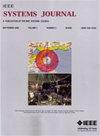AoI-Aware Resource Allocation for Smart Multi-QoS Provisioning
IF 4.4
3区 计算机科学
Q1 COMPUTER SCIENCE, INFORMATION SYSTEMS
引用次数: 0
Abstract
The age of information (AoI) has recently gained recognition as a critical quality-of-service (QoS) metric for quantifying the freshness of status updates, playing a crucial role in supporting massive ultrareliable and low-latency communications (mURLLCs). In mURLLC scenarios, status updates generally involve the transmission through applying finite blocklength coding (FBC) to efficiently encode small update packets while meeting stringent error-rate and latency-bounded QoS constraints. However, due to inherent system dynamics and varying environmental conditions, optimizing AoI under such multi-QoS constraints often results in nonconvex and computationally intractable problems. Motivated by the demonstrated efficacy of deep reinforcement learning (DRL) in addressing large-scale networking challenges, this work aims to apply DRL techniques to derive optimal resource allocation solutions in real time. Despite its potential, the effective integration of FBC in DRL-based AoI optimization remains underexplored, especially in addressing the challenge of simultaneously upper bounding both delay and error rate. To address these challenges, we propose a DRL-based framework for AoI-aware optimal resource allocation in mURLLC-driven multi-QoS schemes, leveraging AoI as a core metric within the finite blocklength regime. First, we design a wireless communication architecture and AoI-based modeling framework that incorporates FBC. Second, we proceed by deriving upper bounded peak AoI and delay violation probabilities using stochastic network calculus. Subsequently, we formulate an optimization problem aimed at minimizing the peak AoI violation probability through FBC. Third, we develop DRL algorithms to determine optimal resource allocation policies that meet statistical delay and error-rate requirements for mURLLC. Finally, to validate the effectiveness of the developed schemes, we have executed a series of simulations.基于aoi感知的多qos智能资源分配
最近,信息时代(AoI)作为一种量化状态更新新鲜度的关键服务质量(QoS)指标得到了认可,在支持大规模超可靠和低延迟通信(murllc)方面发挥着至关重要的作用。在mURLLC场景中,状态更新通常涉及通过应用有限块长编码(FBC)来有效编码小更新数据包的传输,同时满足严格的错误率和延迟有限的QoS约束。然而,由于固有的系统动力学和多变的环境条件,在这种多qos约束下优化AoI往往会导致非凸和计算棘手的问题。由于深度强化学习(DRL)在解决大规模网络挑战方面的有效性,本工作旨在应用DRL技术实时获得最佳资源分配解决方案。尽管具有潜力,但FBC在基于drl的AoI优化中的有效集成仍未得到充分探索,特别是在解决延迟和错误率同时上界的挑战方面。为了解决这些挑战,我们提出了一个基于drl的框架,用于在murllc驱动的多qos方案中实现AoI感知的最佳资源分配,利用AoI作为有限块长度机制中的核心指标。首先,我们设计了一个包含FBC的无线通信架构和基于aoi的建模框架。其次,利用随机网络演算推导出峰值AoI的上界和延迟违反概率。随后,我们通过FBC构造了一个以最小化AoI峰值违反概率为目标的优化问题。第三,我们开发了DRL算法来确定满足mURLLC统计延迟和错误率要求的最优资源分配策略。最后,为了验证所开发方案的有效性,我们进行了一系列的仿真。
本文章由计算机程序翻译,如有差异,请以英文原文为准。
求助全文
约1分钟内获得全文
求助全文
来源期刊

IEEE Systems Journal
工程技术-电信学
CiteScore
9.80
自引率
6.80%
发文量
572
审稿时长
4.9 months
期刊介绍:
This publication provides a systems-level, focused forum for application-oriented manuscripts that address complex systems and system-of-systems of national and global significance. It intends to encourage and facilitate cooperation and interaction among IEEE Societies with systems-level and systems engineering interest, and to attract non-IEEE contributors and readers from around the globe. Our IEEE Systems Council job is to address issues in new ways that are not solvable in the domains of the existing IEEE or other societies or global organizations. These problems do not fit within traditional hierarchical boundaries. For example, disaster response such as that triggered by Hurricane Katrina, tsunamis, or current volcanic eruptions is not solvable by pure engineering solutions. We need to think about changing and enlarging the paradigm to include systems issues.
 求助内容:
求助内容: 应助结果提醒方式:
应助结果提醒方式:


